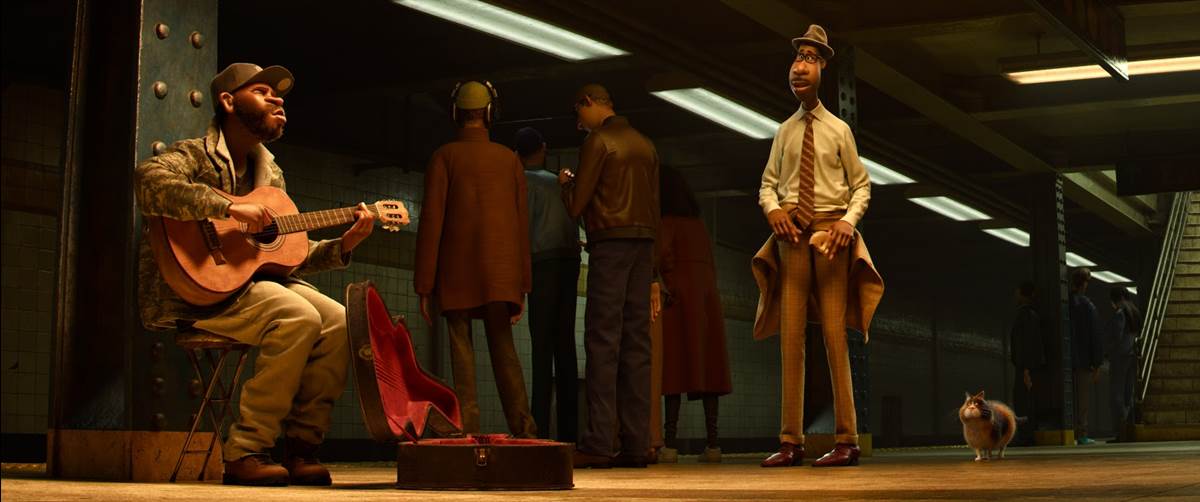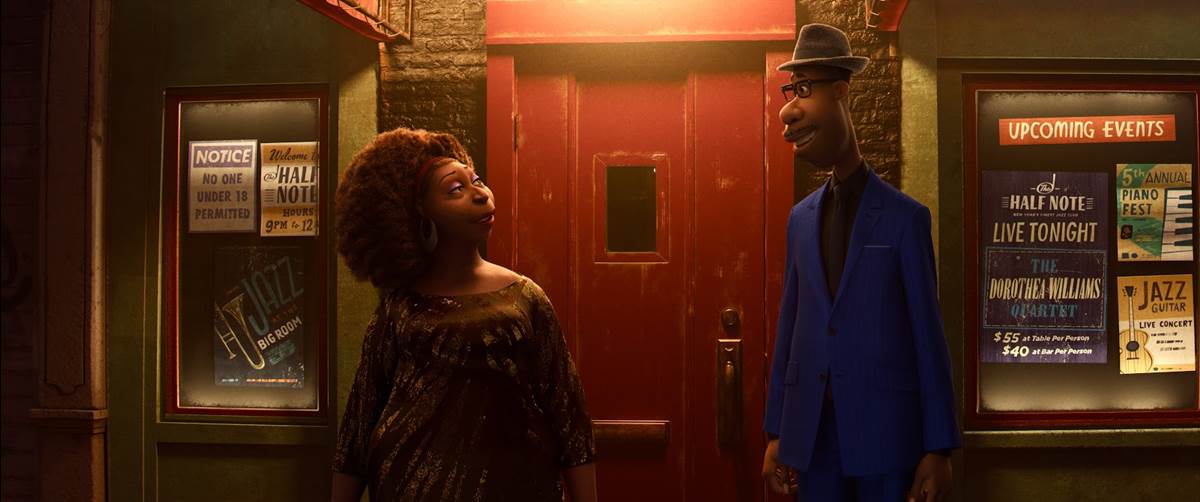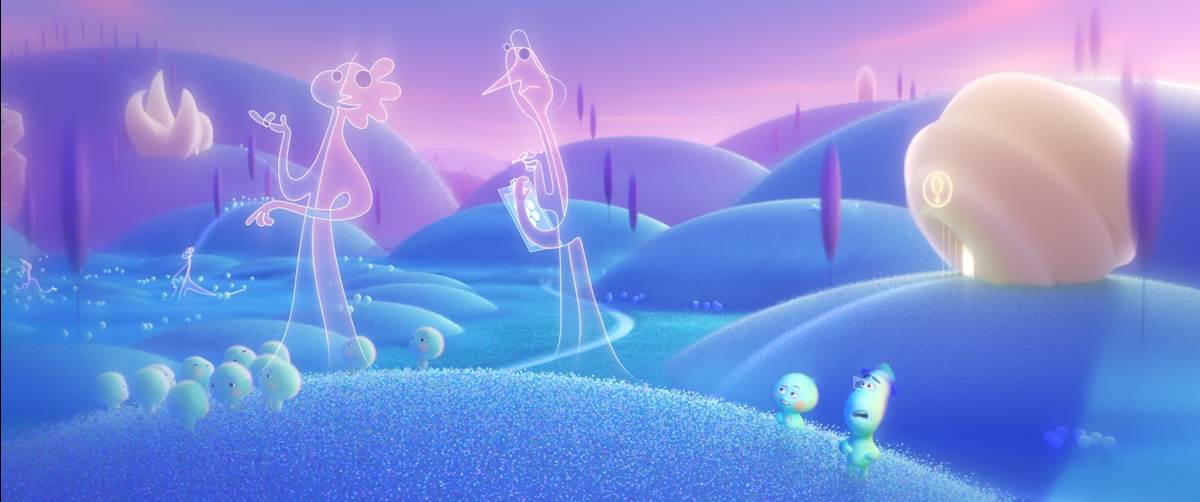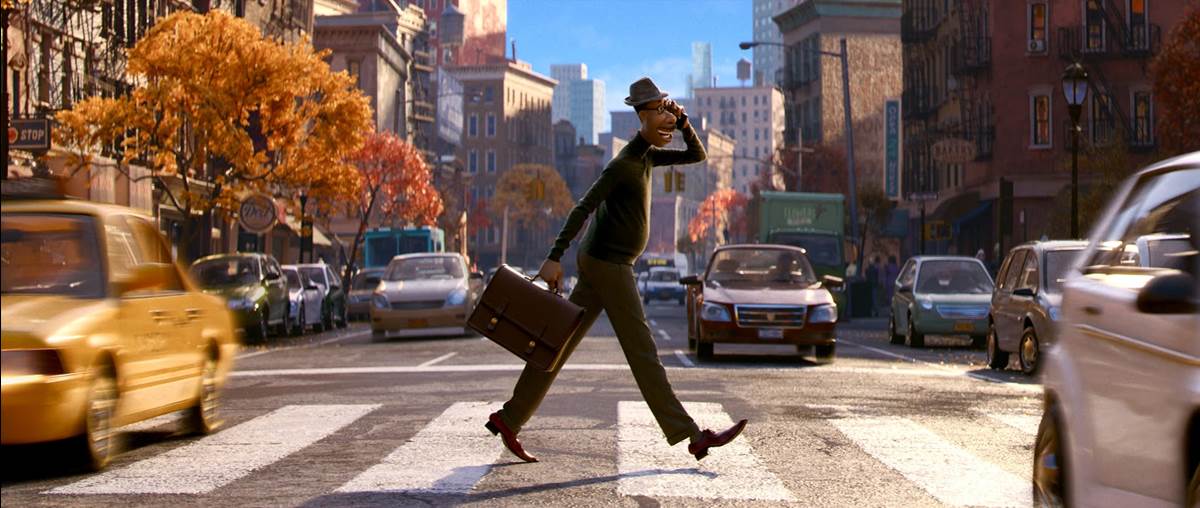Pixar’s Soul takes Disney+ subscribers to New York City and “The Great Before,” the place where all souls come from, on December 25th. In advance of this special holiday gift from The Walt Disney Company, the creative team and voice cast of Soul reunited for a virtual press conference to share their insight and experience working on the film, Pixar’s first animated feature to feature a Black lead character.
The idea for Soul started in the mind of Director Pete Docter who wanted to make a film that answers a question as old as time: What is the meaning of life? He knew they needed a main character that audiences would get invested in. “We played around for a little while with an actor or a scientist, but as soon as we found a jazz musician, that felt very selfless,” Pete Doctor explained. “You don't go into jazz to get rich and famous, you do it because you love it and you have a passion for it and it's fascinating to watch. When you see somebody play, they're just amazing, it's like a magic trick. So as soon as we hit on that, one of our consultants called jazz ‘Black improvisational music’ and we realized we have to make this character Black. He has to be from that culture that brought us this great American art form. And of course, we knew we needed a lot of help with that. Dana [Murray] put together multiple groups of consultants as well as we contacted Kemp Powers and we were lucky to have him along for the ride.”
Among Producer Dana Murray’s many responsibilities on the film was creating a Black Culture Trust that could help Pixar make Soul as authentic to the Black experience in America as possible. “Our Head of Diversity and Inclusion here, Britta Wilson, was a great partner to me in building who those outer consultants were going to be,” Dana Murray shared. “Dr. Johnnetta Cole, we brought in Daveed Diggs, we were lucky enough to get to hang out with Ryan Coogler, have him look at the film. Bradford Young, Questlove, I could go on and on. And we worked with a lot of working musicians as well in New York City and here in Emeryville and teachers… So the depth of the bench was crazy and we just were really lucky. And we also brought together the Black employees at Pixar and created a trust as well, so they were a part of the daily process. And then Jon Batiste, I mean, he's the obvious one to mention here, too… He's a genius. He came to Pixar quite a bit to speak to our crew and the animators and he brought a lot of life to Joe [Gardner]'s character.”
Writer and Co-Director Kemp Powers was surprised when he first got the call from Pete Docter and Dana Murray to join the project as a writer. He was delighted that they had read his play One Night in Miami and knew his voice and style. He had been fighting Hollywood for years when asked to tone down elements of Black culture in his work. “This was a wonderful opportunity to both do something that my family, that my kids and my mom and all my relatives could be proud of, but something that everyone could enjoy and just show how the Black-American experience and our humanity is as universal as anyone else's experience,” Kemp Powers revealed. “And it really did start with that conversation with Pete. I remember Joe getting a suit was a plot point and I said to Pete, ‘Well, he also needs a haircut, right?’ And someone said, ‘Well, the haircut isn't as important as the suit.’ And I was like, ‘I wouldn't have even come up just to Pixar for the interview if I couldn't have got lined up, so I'm going to disagree and say that that haircut is every bit as important as the threads.’ And I love that Jon Batiste actually backed me on that. Because Jon Batiste, in talking about what makes a person successful in jazz said, ‘It's not just the talent, it's the complete package. Sometimes it's about the presentation, it's about your body language, it's about your threads.’ We all understand that and it was so great to have that be actually a plot point in this film.”
“Jamie is known for doing so many different characters with so many different voices, but the thing we loved the most is just Jamie's natural speaking voice,” Kemp Powers gushed about casting Jamie Foxx as Joe Gardner and getting to work closely with the actor to help bring the character to life. “Just having a conservation with Jamie, we're like, that's Joe. It's not even a character, it's just who Jamie is when you're sitting next to the water cooler, just having a conversation. Because the way he's talking to you there and then, it's got a warmth to it… In a way that it feels like he's really connecting with you. We just wanted to hear Jamie talk like Jamie.” During recording sessions in Stage B on the Walt Disney Studios lot, Jamie Foxx would serenade the directors and producer during breaks from recording on a grand piano.
“Pete, Kemp, Dana have gotten me where I need to be,” Jamie Foxx shared about finding his character. “When it comes to animation, I've done animation, but my daughter, my youngest, was like, ‘Yeah, dad, you've done animation, but not good animation, not the good kind.’ I said, ‘What do you mean?’ ‘You're Pixar now. You made it.’ So my daughter, 11-years-old… she is looking at me like, oh, when is it going to take off for you? So donning this role and it being such a momentous role and at the same time having the music… That's what I came out here to do. I know my grandmother, who is looking down, would be proud that we are doing something like this. It's such an incredibly weird time, what we're going through. Something good needs to really, really happen and I think this is something great and I think when people see it, it's going to be amazing. “
Tina Fey plays 22, a new soul mentored by Joe Gardner in the film. With years of comedy acting and writing under her belt, the character almost feels like it comes from her own mind, but she gives all the credit to Kemp Powers. “Kemp's script was really strong,” the SNL alumni shared. “I went into a lot of sessions and I would come back and there'd be rewrites and new pages of sequences as they evolved. There were little tiny bits of improv here and there, but you can really only do that when the core, when the structure is solid. And the script is really good, so the credit really goes to Kemp and Pete.”
About half the film takes place in New York City and some of the actors were impressed by how authentic the city feels in Pixar’s digital world. “There's this one shot where Joe and 22 exit a hospital,” Tina Fey revealed. “I feel like it's meant to be sort of where Saint Vincent's was, kind of downtown, Manhattan hospital. The amount of assaultive noise and visuals and energy coming at them is overwhelming to 22 and that really took me back to what it feels like the first time you come to New York, from wherever you're from. And you're just like, ‘Oh my goodness, this is so much.’ I think they really captured the spirit of the city.”
“I didn't find it specific to one area of the city necessarily, however it was a neighborhood,” Phylicia Rashad, who plays Joe’s mother Libba, added. “It was a real neighborhood and there were businesses and shops and people lived there. And there are a number of neighborhoods in and around New York City like that. Harlem is definitely one, Astoria, Queens is another… I thought it was so authentic and I loved the colors so much. They were vibrant and everything was very specific. I found in the animation, in the drawings, things were quite detailed and specific.”
GoldenGlobe-winner Angela Bassett saw another part of the Big Apple in the film. “It reminded me of Hell's Kitchen,” she shared. “All the restaurants, the businesses, the grates, the subway, the grime and the dirt. The assault, just the sensory overload that New York can be in both an overwhelming way and also a wonderful, ‘I'm alive and I'm here for it’ kind of way. I thought they captured it marvelously.”
The other half of the film takes place in “The Great Before,” a completely original world that could only come from the talented artists at Pixar. “A lot of the underpinnings of the story are very philosophical, so we looked at ancient Greece,” Pete Docter explained about the process of bringing a fictional location to life. “We were picturing large fields where you'd stand and Plato would pontificate or whatever. But then we realized we don't want it to be specific to any culture because everybody around the world started here, so it can't be culturally specific. Then we experimented for a while and looked ultimately at some World's Fair images from the '40s and '60s. There are these big buildings that are meant to inspire and be austere and some of them are shaped like big tires, some of them are just cool abstract shapes. That was where we started and we wanted it to feel explicit as to what it's doing. A character walks in and then it walks out and the character is [changed]. So we get to see what the purpose of these buildings are.]
From the streets of New York City to the place where all souls are born, you can experience the emotional joyride that is Pixar’s Soul starting December 25th only on Disney+.




